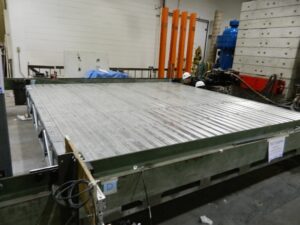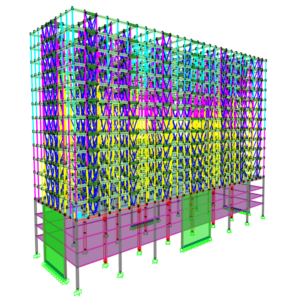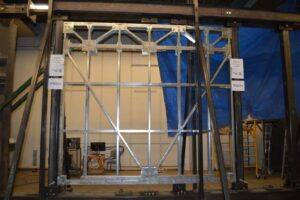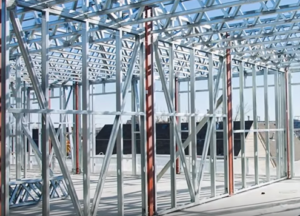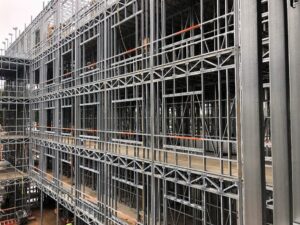
Client: Prescient
Completion Date: 2022
Services: Research and Development, Seismic Systems, Building Codes and Standards, Load Testing
Summary:
J.R. Harris & Company led the development of a proprietary lateral force-resisting seismic system for use in high seismic regions, with qualification in accordance with FEMA P695. The system is comprised of cold-formed steel framing (CFS), hollow structural steel sections, and a proprietary steel deck. Starting with the existing proprietary framing system, we introduced an innovative yielding connection and developed detailed design criteria to create a highly ductile seismic force-resisting system.
Over the course of multiple years, we conducted extensive physical testing, analytical modeling, structural design, and system evaluation to establish the system’s structural and seismic performance. Testing was performed on critical components, including yielding connections, bracing members, story-high wall panels, column splices, welds, CFS material, and diaphragms, which were used to understand and refine system behavior models. Nonlinear modeling, including nonlinear response history analysis and incremental dynamic collapse analysis, was performed to evaluate system collapse capacity and seismic performance under extreme ground motions. This comprehensive research culminated in the qualification of the seismic system under ICC-ES AC494, marking a significant advancement in the approval of alternative seismic systems.
This project also included a detailed study of podium buildings, where the relatively flexible Prescient superstructure is supported by a stiffer lower podium structure. This research assessed the impacts of seismic motion amplification at the tower base, nonlinear response of the combined system, and collapse performance under extreme conditions. The findings informed modifications to the seismic system design criteria, ensuring that the Prescient system constructed as part of a podium building meets the seismic performance objectives of AC494.
